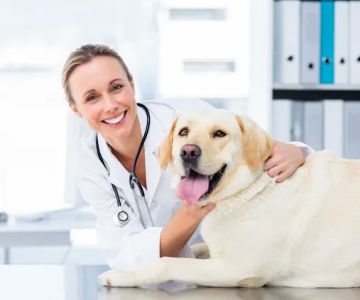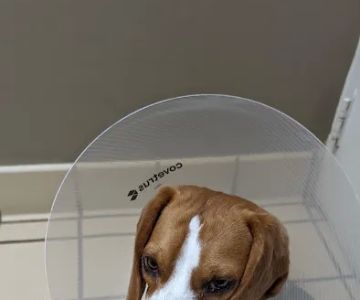Recognizing the Signs of Dehydration in Pets and How to Treat It
As pet owners, we always strive to keep our furry friends happy and healthy. One crucial aspect of their well-being is ensuring that they stay hydrated, especially during hot weather or after exercise. However, dehydration in pets is more common than many of us realize and can quickly become dangerous if not addressed. Understanding the signs of dehydration and knowing how to treat it can help ensure that your pet remains healthy and comfortable.
1. What is Dehydration in Pets?
Dehydration occurs when your pet loses more water than it takes in. Water is essential for maintaining the proper function of the body, and dehydration can affect your pet’s kidneys, digestive system, and overall health. It’s especially important for pets that are highly active, elderly, or suffer from certain health conditions to stay hydrated. Without proper hydration, your pet could experience serious issues such as organ failure, heatstroke, or even death in extreme cases.
2. Common Signs of Dehydration in Pets
It’s crucial to recognize the signs of dehydration early so you can take action before the condition worsens. Here are some common symptoms of dehydration in pets:
- Dry Gums and Nose: A dry or sticky mouth and nose are one of the earliest signs of dehydration. Gently lift your pet's lip and feel their gums. If the gums are dry, that’s a clear indication of dehydration.
- Sunken Eyes: Dehydration can cause the eyes to appear sunken, which can be a visible sign that your pet is not getting enough fluids.
- Loss of Skin Elasticity: Gently pinch the skin at the back of your pet’s neck or between their shoulder blades. In a well-hydrated pet, the skin will quickly return to its normal position. If the skin stays up and returns slowly, it’s a sign of dehydration.
- Reduced Urination: If your pet is not urinating as often as usual or the urine is dark yellow, this could be a sign of dehydration.
- Lethargy and Weakness: Dehydrated pets often become tired and weak because their bodies are struggling to maintain normal functions without enough water.
- Loss of Appetite: Dehydration can also lead to a decrease in appetite. If your pet is refusing food and water, dehydration could be the underlying cause.
3. Risk Factors for Dehydration in Pets
Several factors can increase your pet’s risk of dehydration:
- Hot Weather: Pets are more susceptible to dehydration during hot, humid conditions, especially if they’re active or outdoors for long periods.
- Exercise: Pets that exercise intensely or for extended periods are at risk of dehydration. This is particularly true for breeds that are prone to overheating, such as bulldogs and pugs.
- Health Conditions: Pets with kidney disease, diabetes, or digestive issues may be more likely to suffer from dehydration.
- Age: Older pets may be less able to regulate their body temperature and are at a higher risk for dehydration.
4. How to Treat Dehydration in Pets
If you notice signs of dehydration in your pet, it’s essential to act quickly. Here are some steps you can take to help treat mild dehydration:
- Offer Water Frequently: Make sure your pet has access to fresh, clean water at all times. Encourage them to drink by offering small amounts regularly, especially after they’ve been active.
- Electrolyte Solutions: You can give your pet an electrolyte solution designed for pets. These solutions help restore the balance of fluids and minerals in the body.
- Moisture-Rich Foods: If your pet is not drinking water, offering foods with high water content, such as wet dog food or fruits like watermelon, can help rehydrate them.
- Visit a Veterinarian: If your pet’s dehydration is severe, they may need intravenous (IV) fluids to quickly replenish lost fluids. A visit to the vet is necessary if the signs of dehydration persist or worsen.
5. Preventing Dehydration in Pets
The best way to handle dehydration is to prevent it from happening in the first place. Here are some tips to help your pet stay hydrated:
- Always Provide Fresh Water: Make sure your pet always has access to clean, fresh water. If your pet is outdoors, bring water with you to encourage hydration during walks or hikes.
- Monitor Activity in Hot Weather: Avoid exercise during the hottest parts of the day, and be sure to offer your pet water breaks during activities. If it’s extremely hot, keep your pet indoors in a cool, shaded environment.
- Encourage Hydration: Some pets, especially cats, may be picky about drinking water. Using water fountains or adding wet food to their diet can help encourage drinking.
6. When to Seek Veterinary Help
If you notice any of the more severe signs of dehydration in your pet, or if their condition does not improve with home care, it’s important to contact your veterinarian immediately. Signs of severe dehydration include rapid heart rate, vomiting, diarrhea, and shock. In such cases, your pet may require urgent veterinary care to prevent further complications.
In conclusion, dehydration in pets is a serious condition that requires quick intervention. By understanding the signs and knowing how to treat and prevent dehydration, you can ensure that your pet remains healthy and hydrated. If in doubt, always seek veterinary advice to ensure your pet’s well-being.
For more tips on keeping your pets healthy and hydrated, visit Hidden Brook Veterinary, where we offer expert care and advice to help you and your pets live your best lives.











